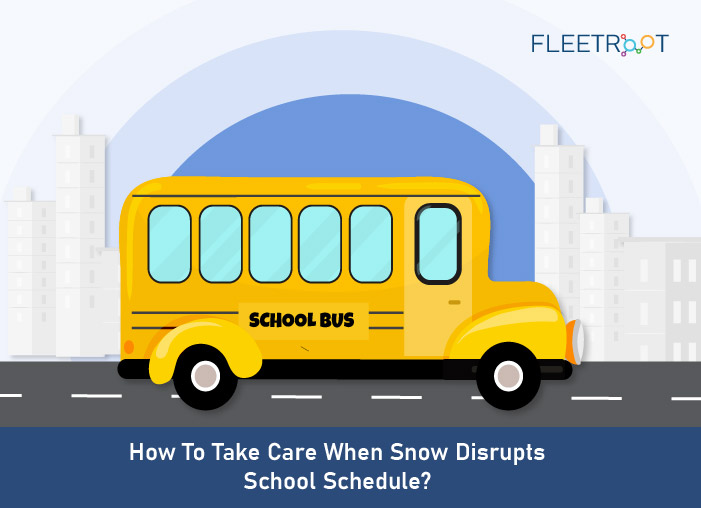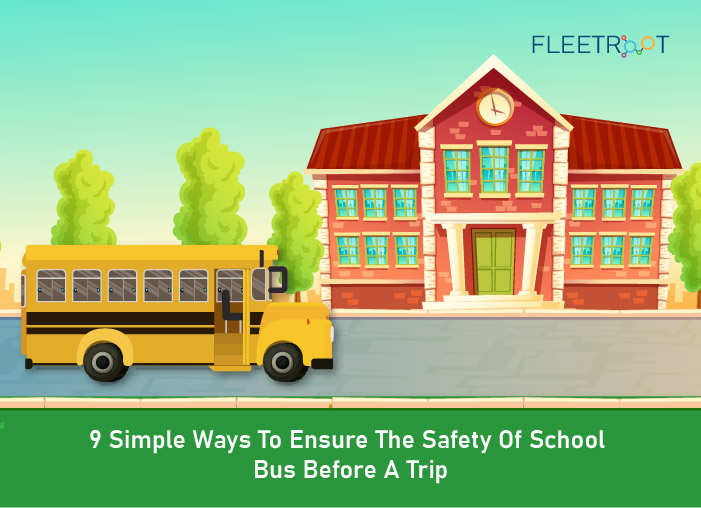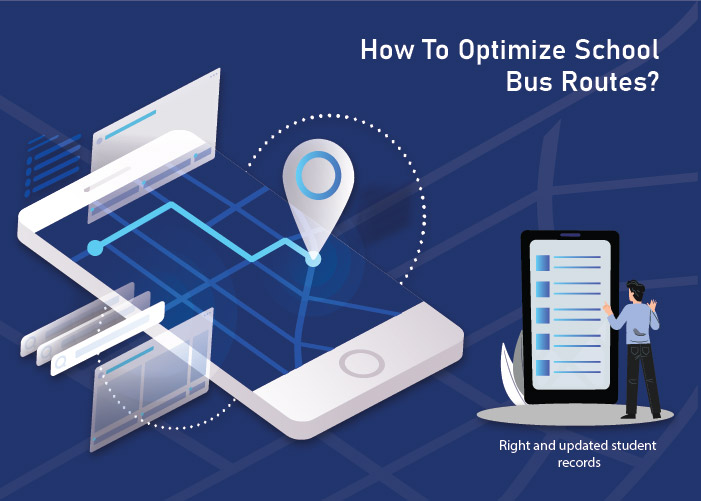School Bus Winter Challenges
School buses are considered one of the safest means of transportation for school children.
However, school bus drivers can face severe challenges while driving in extreme weather conditions, such as snow, ice, fog, sleet, and hail.
Such weather anomalies restrict drivers from operating school buses safely, making it dangerous for them, students on board, and everyone else on the road.
Ensuring that each school bus driver in the fleet is well-prepared for tricky weather is necessary for minimizing the risk of winter road accidents and keeping students safe. This requires some good foresight, preparation, driver training, and preventive maintenance for the school buses.
Top 10 Tips For School Bus Fleets To Take Care in Winter
1.Preparedness Plan: During winters, the school transportation department should have a plan to prepare for severe weather conditions. It is important to undertake preparedness tasks, such as installing snow tyres or snow chains to prevent slippage before harsh winters set in.
It is also important to have a plan for extreme conditions and incidents that occur less frequently.
If there are poor driving conditions in winter, the plan should be to have buses make their first stops on time, or even a little earlier than the scheduled time, because snowy or icy routes will potentially slow travel, resulting in delayed pick-ups at each subsequent bus stop.
2.Driver Training Courses: The key to properly preparing drivers for snow and ice is in-service training that includes behind-the-wheel exercises and classroom education.
School drivers should be allowed to practice their skills to combat slick driving conditions during winters.
Training courses should be scheduled to give them practice on braking techniques and defensive driving like keeping a safe distance from other vehicles, slowing down, adding more stopping distances, and avoiding hazardous areas, including bridges and overpasses, during winters.
Knowing when to pull over and contact a supervisor can save lives.
3.Mock drills and exercises can also be conducted for both drivers and students to give them enough practice to better handle a real-life situation.
4.Preventive Maintenance Plan: Well-maintained school buses are easier to control when weather conditions get dicey during winters. So, the school transportation teams should develop a year-round maintenance plan to keep students and drivers safe at all times, especially during winters.
5.School Bus Components Inspection and Pre-trip checks: During winter, school transportation teams should perform pre-trip checks (a daily inspection, mandated by Law, that must be done on each school bus before a trip.
The fleet maintenance department should also regularly inspect the following school bus components to keep buses and its riders safe.
Tires, brakes, headlights, horn, engine oil, anti-freeze, and climate control systems should be checked regularly.
Heating and defrosting units, along with hoses, fan belts, and electrical wiring, should be inspected thoroughly.
New wiper blades should be installed at the beginning of winter and checked regularly.
All windows and windshield glass should be inspected for any cracks.
6.Batteries should be kept fully charged and warm.
7.Fuel tanks should be kept as full as possible to prevent condensation from forming on the tank walls. Buses can start using blended fuel during winters before temperatures drop significantly so that they can get warmed and started quickly.
8.Rust or any engine trouble should be addressed immediately.
9.Equip School Buses: School buses should always be equipped with defogging and de-icing chemicals that keep windows clear during cold weather. Also, stock buses with emergency medical aid.
10.Updated Bus Routes: During harsh winter, bus routing should be adjusted to ensure passenger and driver safety. Transportation teams should update routes to avoid steep inclines, narrow roads, unploughed areas with piles of snow, and other roads that become difficult to navigate during winter.
How A School Bus Tracking System can Help in Winters?
An efficient school bus tracking system and routing software is really simple to use and is a big boon for school authorities, transportation teams, and parents, especially during the winter season.
Automated Driver Training Schedules: The system can help transportation teams to better prepare for the winter season by scheduling driver training.
Automated Preventive Maintenance Schedules: The system helps to create an automated schedule for preventive maintenance of the entire fleet.
Automated Weather Alerts: The system provides automated alerts when any bad weather is headed your way.
Real-Time Tracking: The tracking system provides real-time updates to school authorities and parents about the students’ current location using GPS and RFID cards during bad weather.
This gives peace of mind to parents and keeps them worry-free. Real-time tracking helps transportation teams to respond quickly when a bus deviates from its planned route and find solutions quickly during emergencies.
Automated Notifications: The tracking system sends notifications for unscheduled stops, and the real-time location can be tracked using the system’s mobile application. When a bus gets delayed in arriving at a bus stop, it will lead to kids waiting outside longer in the cold.
The system then notifies parents along a bus route by phone or e-mail that the bus is running slow and will arrive late. This makes a huge difference.
Optimal Routing: The school bus routing software allows transportation teams to plan the safest routes for buses. Optimizing bus routes for winter safety has been a complicated task, but with today’s sophisticated scheduling software choosing the right routes has become much easier than before.
The software also helps to prepare alternative routes to use during emergencies or road closures.
Conclusion:
Child safety is of paramount importance for both parents and school administration. Parents get extremely worried when they are not able to track the whereabouts of their children while they are going to or coming back from school, especially during the winter season.
But with a robust school bus tracking system, their worry ends here. The system’s GPS and RFID monitor the attendance and tracks the path of school buses in case of extreme weather conditions or an emergency.
So, is your school using a school bus GPS tracking system and routing software to ensure safety when snow disrupts school schedule?
Call +971 525234328 to schedule a Free Personalized Demo and find out how Fleetroot software can ensure the safety of students and drivers during the bad weather.



